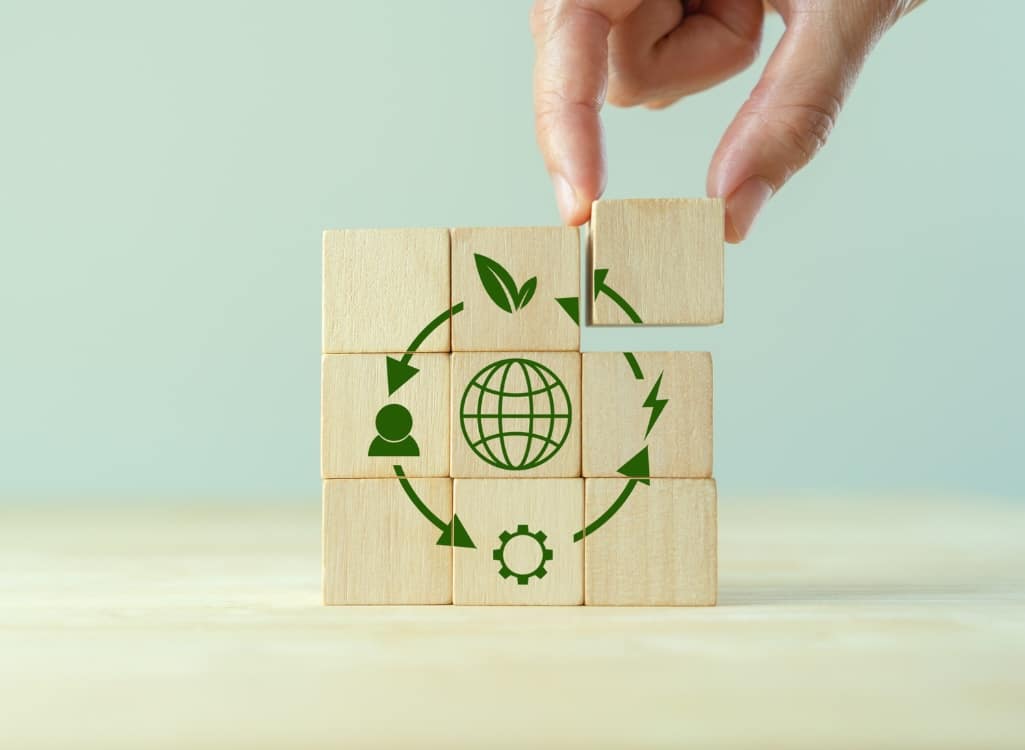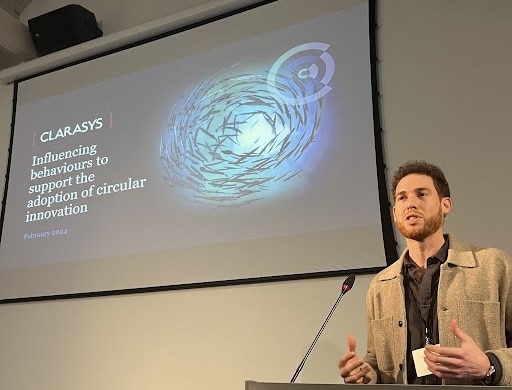Explore the key takeaways from the Circular Economy Festival, where thought leaders discussed the urgent need for change in the current circular economy landscape.
Navigating Circular Economy transformation

Navigating Circular Economy transformation
Explore the key takeaways from the Circular Economy Festival, where thought leaders discussed the urgent need for change in the current circular economy landscape.

Meet the author
Clarasys consultants recently attended the Circular Economy Festival to hear thought leaders discuss the current circular economy landscape and share insights and expertise on how to navigate circular economy transformation.
These experts, including representatives from not-for-profit organisations, governments, and commercial organisations, shared inspiring case studies, innovative business models, and sustainability solutions.
The festival was dedicated to innovation, and there was one underlying message – the need for change has never been more pressing. Here are a few of the key takeaways from the event.
Today’s challenges for the circular economy
The path to Net Zero and true sustainability has to include circularity. Today’s challenge is how we can shift mindsets and behaviours to meet the needs of the planet and people to enable successful circular economy transformation. Design is the most powerful tool we can leverage in the path to circularity. Currently, less than 50% of design schools include the circular economy in their syllabuses, while fewer than a quarter of business schools cover this topic. Current government policy also presents a challenge to the circular economy.
Sustainability topics are often talked about in isolation at corporate or legislative levels and are often treated as temporary hot topics. The problem with this approach is that we aren’t looking at the bigger picture and are missing out on synergies. The focus needs to be on changing the way the global economy works. Every level of the system has multiple complexities and we need to reimagine and rebuild the way we consume. This will take time, money, resources, capability, and technology. Collaboration and a better understanding of the opportunities that exist will help.
Reasons to be optimistic about the future of the circular economy
As awareness increases, organisations are starting to collaborate more effectively. Organisations are learning to recognise the value of working together and being more transparent about their operating models and data and are creating opportunities to demonstrate commercial success and share ideas, showing a positive shift towards circular economy transformation.
Design teams are more conscious about using recycled materials and placing more importance on sustainability ratings instead of aesthetics. In addition, young people who bring valuable new insights are getting involved.
A great example of the work that is being done in the Telco industry, is the increase in refurbishing used kit. We all have a drawer of old phones, tablets, and headphones, at home – these need to be recirculated, and this means we need to remove and change misconceptions that refurbished kit is lower performing or riskier to purchase.
Designing for the future
How do we design for the future, influence behaviours, and ensure the necessary economic foundations exist?
To achieve the circular economy transformation,designers must focus on creating more circular products. In regulated industries or big companies, there is a reluctance to move away from current practices that maximise profits or seek to assuage perceived consumer demand for the latest gadgets.
Often designers have the right intentions but, perhaps because their hands are tied, they aren’t able to look at the full end-to-end business model changes required. This approach, together with design decisions based on out-of-date data such as material constraints, needs to be challenged. A redesigned system that encourages and enables circular products can help to create deeper and longer relationships with customers. We also need to collectively address the current standards that make it hard to update designs using recycled materials.
Policy, regulation, and funding – altering consumer behaviour for a successful circular economy transformation
Changing our throw-away, consumerist society is a mammoth undertaking and for most people, certainly in developed countries, waste is out of sight and not an immediate concern. Legislation will have a big role in slowing down consumption, and accelerating the circular economy transformation.
Incentivising every stakeholder in order to make a circular economy work is key. Systems such as a deposit refund scheme may help, but care needs to be taken to ensure such schemes don’t create confusion in businesses and supply chains. A transparent cost-benefit model across an entire supply chain would give visibility on the opportunities that come from collaborating at scale. And grants can help businesses refine their circular models and enable them to scale.
How can tech help improve the circular economy transformation?
Low margins and low investments have put the waste industry on the back foot. Ultimately, the circular economy is not a sustainability initiative, it’s an entirely new consumption model, and it will also protect the future of every business as well as the planet. Tech and data can enable these new models.
The final message
The overarching message we took away from the two-day festival was that the solution will not be found in product design, but in system design. Designers must be empowered to push back on the brief while decision-makers need to understand and accept the current brief has to change. Ultimately, design alone cannot solve CE challenges. Wholesale change in the way we consume requires investment and collaboration. Once those foundations are in place, we will start to head in the right direction for a true circular economy transformation.
If you need help becoming future fit and unlocking the value of the circular economy, please get in touch.

